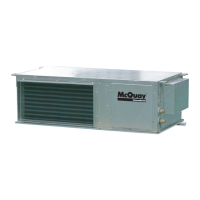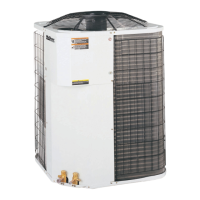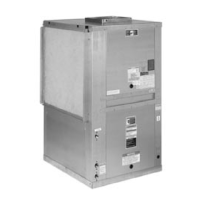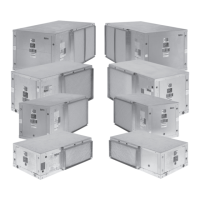IM 985-1 / Page 7 of 36
Note: Be sure that one end of the hose has a swivel
tting to facilitate removal for service. Hard piping to
the unit can result in added operating noise.
4. Ifsealantcompoundisnotprovidedforexiblehose
ttings,applyTeontapetotheconnectionstohelp
prevent leaks.
5. Supply and return shutoff valves are required at each
unit. The return valve is used for balancing and
should have a “memory stop” so that it can always
be closed off, but can only be re-opened to the
properpositionfortheowrequired.
6. Do not connect a unit to the supply and return
piping until the water system has been cleaned and
ushedcompletely.Afterthisisdone,theinitial
connection should have all valves wide open in
preparationforwatersystemushing.
7. Condensate piping can be steel, copper, or PVC.
Each unit is supplied with a clear vinyl condensate
hose.
Figure 4. Typical 2-Pipe Reverse Return Conguration
Piping
1. Connect units to supply and return piping in a two-
pipereversereturnconguration(Figure4).
A reverse return system is inherently self-balancing
and requires only trim balancing where multiple
quantitiesofunitswithdifferentowandpressure
drop characteristics are connected to the same loop.
A simple way to check for proper water balance is
to take a differential temperature reading across the
water connections when in the cooling mode. To
achieveproperwaterow,thedifferentialshouldbe
10°F to 14°F (-5°C to -8°C).
A direct return system may also be acceptable, but
properwaterowbalancingismoredifcultto
achieve and maintain.
2. The piping can be steel, copper or PVC, but must
comply with local codes.
3. Supply and return run outs are typically connected
totheunitbyshortlengthsofhighpressureexible
hose which are sound attenuators for both unit
operating noise and hydraulic pumping noise.

